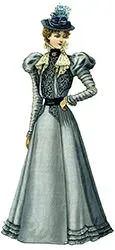 The Nineteenth Century was an eclectic time for jewelry; the fashion world was mostly led by the styles out of France, a country in the midst of political turmoil and whose values and tastes were always changing. The last ten years of the Eighteenth Century in France were occupied by the French Revolution, a period of time in which the elaborate fashions of the Baroque and Rococo periods were stamped out. By the turn of the century, the new regime had brought about enough economic stimulus that a revival of something like luxury was afoot, and for the next fourteen years, under the reign of Napoleon Bonaparte, the design and wearing of jewelry was a big part of French society.
The Nineteenth Century was an eclectic time for jewelry; the fashion world was mostly led by the styles out of France, a country in the midst of political turmoil and whose values and tastes were always changing. The last ten years of the Eighteenth Century in France were occupied by the French Revolution, a period of time in which the elaborate fashions of the Baroque and Rococo periods were stamped out. By the turn of the century, the new regime had brought about enough economic stimulus that a revival of something like luxury was afoot, and for the next fourteen years, under the reign of Napoleon Bonaparte, the design and wearing of jewelry was a big part of French society.
 Under Napoleon, an exaggerated enthusiasm for the antique was born. The paintings in the gallery at Versailles offer a detailed view of what was worn during Napoleon's Empire; this is a highly decorated period. The most financially fortunate wore jewels actually excavated from ancient Greece and Rome. Others simply adopted similar costumes: some French women went about with unstockinged feet in sandals that looked Classical, which enabled them to wear jewels in their toes. Engraved gems and cameos such as had enjoyed some popularity in Classical times were resurrected and strung with or without precious stones and important diamonds. Antique gems were worn when possible, but other gems were manufactured as careful studies of the technique and style of these older stones. Gold was usually thin, light, and of low quality, with simple designs often in the form of clusters of grapes. Metal was often matte. Stones most commonly used were carnelians, moss-agates, turquoises, garnets, pink and yellow topazes, and coral, sometimes all mixed together.
Under Napoleon, an exaggerated enthusiasm for the antique was born. The paintings in the gallery at Versailles offer a detailed view of what was worn during Napoleon's Empire; this is a highly decorated period. The most financially fortunate wore jewels actually excavated from ancient Greece and Rome. Others simply adopted similar costumes: some French women went about with unstockinged feet in sandals that looked Classical, which enabled them to wear jewels in their toes. Engraved gems and cameos such as had enjoyed some popularity in Classical times were resurrected and strung with or without precious stones and important diamonds. Antique gems were worn when possible, but other gems were manufactured as careful studies of the technique and style of these older stones. Gold was usually thin, light, and of low quality, with simple designs often in the form of clusters of grapes. Metal was often matte. Stones most commonly used were carnelians, moss-agates, turquoises, garnets, pink and yellow topazes, and coral, sometimes all mixed together.
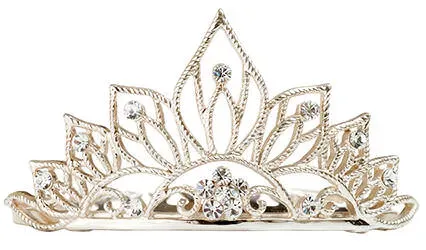 Ornaments for every part of the body shared an affinity with antique styles: on the head, women wore frontlets and diadems, combs, triple chains, and strings of pearls. Ferrorrieres, such as had been popular in the fifteenth century, were worn generally in the same style, with a jewel strung on a fine gold chain or velvet ribbon and tied around the forehead. In Germany, versions of many of these pieces were made in cast-iron, and cuts of hair were plaited into rings, bracelets, necklaces, watch-chains, and ornamental landscapes, sometimes as an affectionate gift to a friend or lover, but mostly in situations that related to mourning the deceased.
Ornaments for every part of the body shared an affinity with antique styles: on the head, women wore frontlets and diadems, combs, triple chains, and strings of pearls. Ferrorrieres, such as had been popular in the fifteenth century, were worn generally in the same style, with a jewel strung on a fine gold chain or velvet ribbon and tied around the forehead. In Germany, versions of many of these pieces were made in cast-iron, and cuts of hair were plaited into rings, bracelets, necklaces, watch-chains, and ornamental landscapes, sometimes as an affectionate gift to a friend or lover, but mostly in situations that related to mourning the deceased.
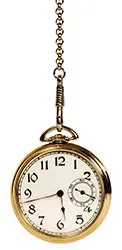 After Napoleon, jewelry for men declined in popularity. Almost all that remained for men to wear were seals hanging from fobs, or watches hanging from chains. The Romantic period began around the year 1830, and women during this time were obsessed with chivalry and all things medieval. Gothic influence is clear in Romantic jewelry, which was sometimes sculpted to resemble knights on horseback or ladies in medieval dress, but was sometimes a mannered version of the architectural styles of the Gothic period, updated with the development of machinery that could assist in the manufacture of thin goldwork. In the middle of the century, Rococo styles were revived. These were years in which countless antique and valuable ornaments were deconstructed, their diamonds and precious stones reset into newer settings and their beautiful metalwork melted down; this is of course ironic because of designers' strong interest in the past, but the styles were revived and mixed and convoluted, and many actual antiques were lost.
After Napoleon, jewelry for men declined in popularity. Almost all that remained for men to wear were seals hanging from fobs, or watches hanging from chains. The Romantic period began around the year 1830, and women during this time were obsessed with chivalry and all things medieval. Gothic influence is clear in Romantic jewelry, which was sometimes sculpted to resemble knights on horseback or ladies in medieval dress, but was sometimes a mannered version of the architectural styles of the Gothic period, updated with the development of machinery that could assist in the manufacture of thin goldwork. In the middle of the century, Rococo styles were revived. These were years in which countless antique and valuable ornaments were deconstructed, their diamonds and precious stones reset into newer settings and their beautiful metalwork melted down; this is of course ironic because of designers' strong interest in the past, but the styles were revived and mixed and convoluted, and many actual antiques were lost.
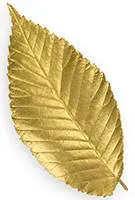 Mid-century, jewelry suddenly underwent a modern revival. During this period, the working of gold and silver became important and fine stones regained an elegant prominence in settings. Religious symbology had been under steady decline in fashions, and it is only in French and German peasant jewelry of the period that one finds crosses and other Christian symbols with real regularity. The fashionable courts of Europe had become far more entranced with naturalistic and then ornate, decorative forms, than with the symbols of their religion.
Mid-century, jewelry suddenly underwent a modern revival. During this period, the working of gold and silver became important and fine stones regained an elegant prominence in settings. Religious symbology had been under steady decline in fashions, and it is only in French and German peasant jewelry of the period that one finds crosses and other Christian symbols with real regularity. The fashionable courts of Europe had become far more entranced with naturalistic and then ornate, decorative forms, than with the symbols of their religion.
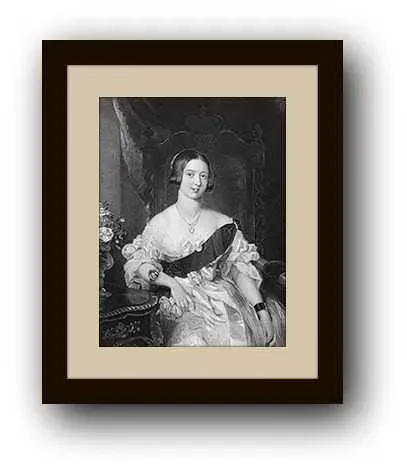 Queen Victoria came to the English thrown in 1837. Under her rule, one of the most important factors in a well-dressed lady's attire was jewelry. This was the height of the British Industrial Revolution, and there were remarkable economic and social shifts during the period. Before the Industrial Revolution, the Church and aristocracy had long occupied the highest class of citizens and were born into this place in society; the bourgeoisie was made up of workers who were generally underprivileged; the luckiest of the lower class had work, but very little money. Industrialization enhanced both the economic situation and the social status of the middle class, and though it sunk some of the lower classes deeper into exploitative situations, by the late Nineteenth century, laws were being passed to curb exploitative circumstances in England. Because of all this social change, money was flowing through new hands, and the mid to lower classes showed an interest in and had access to jewelry.
Queen Victoria came to the English thrown in 1837. Under her rule, one of the most important factors in a well-dressed lady's attire was jewelry. This was the height of the British Industrial Revolution, and there were remarkable economic and social shifts during the period. Before the Industrial Revolution, the Church and aristocracy had long occupied the highest class of citizens and were born into this place in society; the bourgeoisie was made up of workers who were generally underprivileged; the luckiest of the lower class had work, but very little money. Industrialization enhanced both the economic situation and the social status of the middle class, and though it sunk some of the lower classes deeper into exploitative situations, by the late Nineteenth century, laws were being passed to curb exploitative circumstances in England. Because of all this social change, money was flowing through new hands, and the mid to lower classes showed an interest in and had access to jewelry.
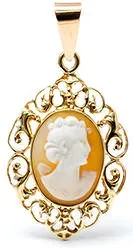 Women's clothing throughout the Victorian era changed from the fairly straight columnar dresses of the late Empire look through voluminous skirts and sleeves with low necks, then to dainty, tight shouldered dresses with hoop skirts, and finally to tight fitting bodices with more and more exaggerated bustles. Though we tend to think of the Victorian era as a time of prudishness and modesty, the clothing of the wealthy, at least, was extremely sensual and revealing in its way. Every part of the body that was left open to show skin was a possible canvas to be adorned with jewels, and the natural beauty of the Victorian woman was indeed enhanced by pieces for her hat, her hair, her ears, neckline, wrists, chest, waist, and even ankles. If the women could afford it, these pieces were made with silver, gold and platinum set with gemstones. Aluminum was less frequently available, but engravings and cameos of shells and
Women's clothing throughout the Victorian era changed from the fairly straight columnar dresses of the late Empire look through voluminous skirts and sleeves with low necks, then to dainty, tight shouldered dresses with hoop skirts, and finally to tight fitting bodices with more and more exaggerated bustles. Though we tend to think of the Victorian era as a time of prudishness and modesty, the clothing of the wealthy, at least, was extremely sensual and revealing in its way. Every part of the body that was left open to show skin was a possible canvas to be adorned with jewels, and the natural beauty of the Victorian woman was indeed enhanced by pieces for her hat, her hair, her ears, neckline, wrists, chest, waist, and even ankles. If the women could afford it, these pieces were made with silver, gold and platinum set with gemstones. Aluminum was less frequently available, but engravings and cameos of shells and ![]() onyx were popular. Less wealthy women wore faux gold products worked with elaborate care to shine as brilliantly and intriguingly as their more expensive counterparts.
onyx were popular. Less wealthy women wore faux gold products worked with elaborate care to shine as brilliantly and intriguingly as their more expensive counterparts.
 Men in Victorian England wore jewelry that had fairly practical connotations: this is the generation in which the stickpin, the ring, the cuff stud and the cravat stud became associated with masculinity. This is in part because men began wearing what we recognize now as suits.
Men in Victorian England wore jewelry that had fairly practical connotations: this is the generation in which the stickpin, the ring, the cuff stud and the cravat stud became associated with masculinity. This is in part because men began wearing what we recognize now as suits.
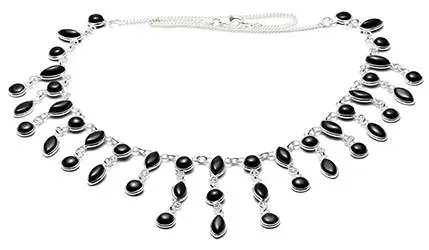 There are definitely distinct periods to the Victorian era. The first 23 years of Victoria's reign were happy and prosperous, both for the Queen and the country. The period is termed "Romantic", and the jewelry of the time was primarily fashioned in yellow gold, enhanced with naturalistic gems such as seed pearls and pink coral, and modeled in delicate openwork. Women wore quite a bit of fanciful ornamentation in their hair. When Queen Victoria's husband, Prince Albert, died in 1861, the Queen's whole palette changed, and the country followed her darker, more serious tone. For the first few months after his death, she wore no jewelry, but then began to adopt all sorts of black decorations, especially jewelry set with jet mined from the north of England. Jewelry during this period also employed dark
There are definitely distinct periods to the Victorian era. The first 23 years of Victoria's reign were happy and prosperous, both for the Queen and the country. The period is termed "Romantic", and the jewelry of the time was primarily fashioned in yellow gold, enhanced with naturalistic gems such as seed pearls and pink coral, and modeled in delicate openwork. Women wore quite a bit of fanciful ornamentation in their hair. When Queen Victoria's husband, Prince Albert, died in 1861, the Queen's whole palette changed, and the country followed her darker, more serious tone. For the first few months after his death, she wore no jewelry, but then began to adopt all sorts of black decorations, especially jewelry set with jet mined from the north of England. Jewelry during this period also employed dark ![]() garnet,
garnet, ![]() onyx, and dark shells, sometimes carved into skulls; diamonds and lighter colored stones were not much in use. In 1867, diamonds were discovered in South Africa, and at the same time Japanese art was exhibited in Paris. As precious gems flooded the late Victorian market, craftsmen unleashed a whole new set of naturalistic designs, much of which was influenced by the Western conception of Eastern design methodologies."
onyx, and dark shells, sometimes carved into skulls; diamonds and lighter colored stones were not much in use. In 1867, diamonds were discovered in South Africa, and at the same time Japanese art was exhibited in Paris. As precious gems flooded the late Victorian market, craftsmen unleashed a whole new set of naturalistic designs, much of which was influenced by the Western conception of Eastern design methodologies."
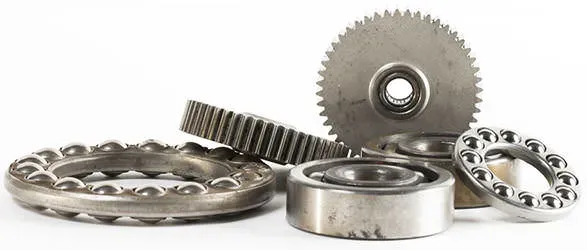 Industrialization affected all of these periods in many ways. Although it freed up money for the purchasing of jewelry and loosened social bonds as to who deserved to wear it, it also adjusted the standards with which jewelry was made. Machines could surely make increasingly complicated designs quite easily, and mass production became a possibility, which also lowered prices. But many women in the Victorian period were somewhat indignant at the decrease in quality of mass produced goods, from clothing to their precious gems. The rebelled in such a way that a whole new movement was influenced by their taste for careful craftsmanship: the late Nineteenth century saw the birth of the Arts and Crafts movement, as well as the generation of high end retail stores like Tiffany.
Industrialization affected all of these periods in many ways. Although it freed up money for the purchasing of jewelry and loosened social bonds as to who deserved to wear it, it also adjusted the standards with which jewelry was made. Machines could surely make increasingly complicated designs quite easily, and mass production became a possibility, which also lowered prices. But many women in the Victorian period were somewhat indignant at the decrease in quality of mass produced goods, from clothing to their precious gems. The rebelled in such a way that a whole new movement was influenced by their taste for careful craftsmanship: the late Nineteenth century saw the birth of the Arts and Crafts movement, as well as the generation of high end retail stores like Tiffany.
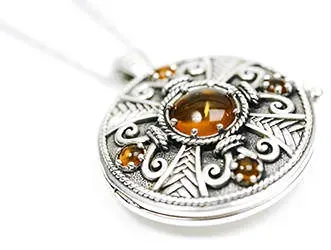 Arts and Crafts jewelry emerged around 1870. Designs promoted within this movement were based on floral or Celtic forms or patterns borrowed from African or Asian cultures with whose artwork and religious symbology Europeans and British were becoming familiar. Stones set into these pieces tended to be cabochon: polished and rounded, but not faceted or fancy, even when the gems themselves were precious. Individuals again became famous for their skills, if only for this short period before the turn of the century and the onset of Art Nouveau.
Arts and Crafts jewelry emerged around 1870. Designs promoted within this movement were based on floral or Celtic forms or patterns borrowed from African or Asian cultures with whose artwork and religious symbology Europeans and British were becoming familiar. Stones set into these pieces tended to be cabochon: polished and rounded, but not faceted or fancy, even when the gems themselves were precious. Individuals again became famous for their skills, if only for this short period before the turn of the century and the onset of Art Nouveau.